
Build your own bench! This beautiful piece is inspired by vintage benches, and is perfect as a low console table and for occasional seating. We love this bench under a window, in a hall, at the end of a bed or even on the front porch! Free plans from Ana-White.com
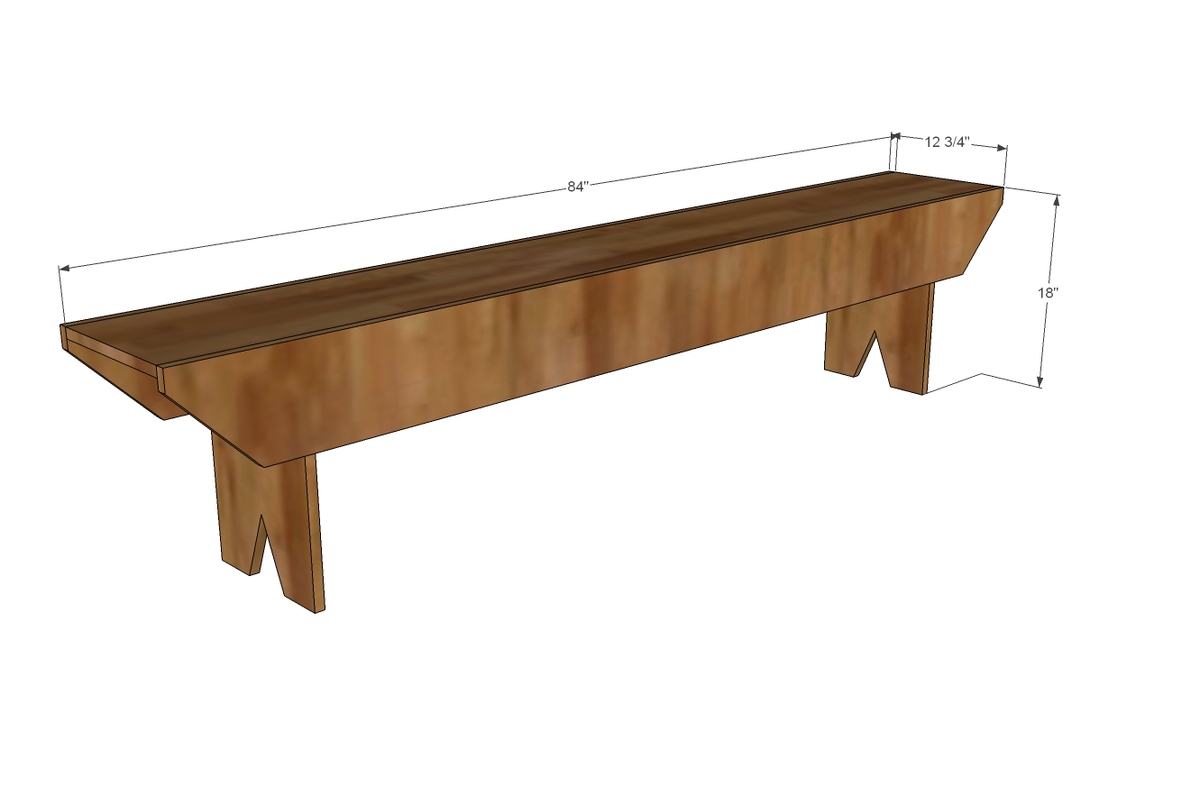
Preparation
- 2 - 1x8 @ 8 feet long
- 1 - 1x12 @ 10 feet long
- 2 - 1x12 @ 17-1/4" (legs)
- 1 - 1x12 @ 84" (seat)
- 2- 1x8 @ 84" (aprons)
Please read through the entire plan and all comments before beginning this project. It is also advisable to review the Getting Started Section. Take all necessary precautions to build safely and smartly. Work on a clean level surface, free of imperfections or debris. Always use straight boards. Check for square after each step. Always predrill holes before attaching with screws. Use glue with finish nails for a stronger hold. Wipe excess glue off bare wood for stained projects, as dried glue will not take stain. Be safe, have fun, and ask for help if you need it. Good luck!
Instructions
Step 2
It is always recommended to apply a test coat on a hidden area or scrap piece to ensure color evenness and adhesion. Use primer or wood conditioner as needed.


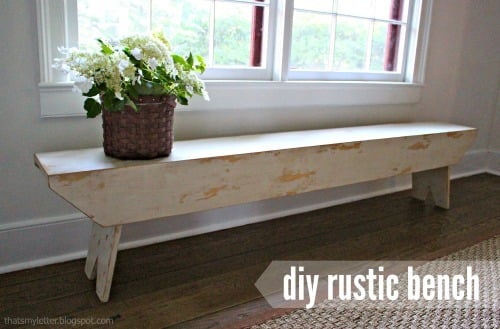


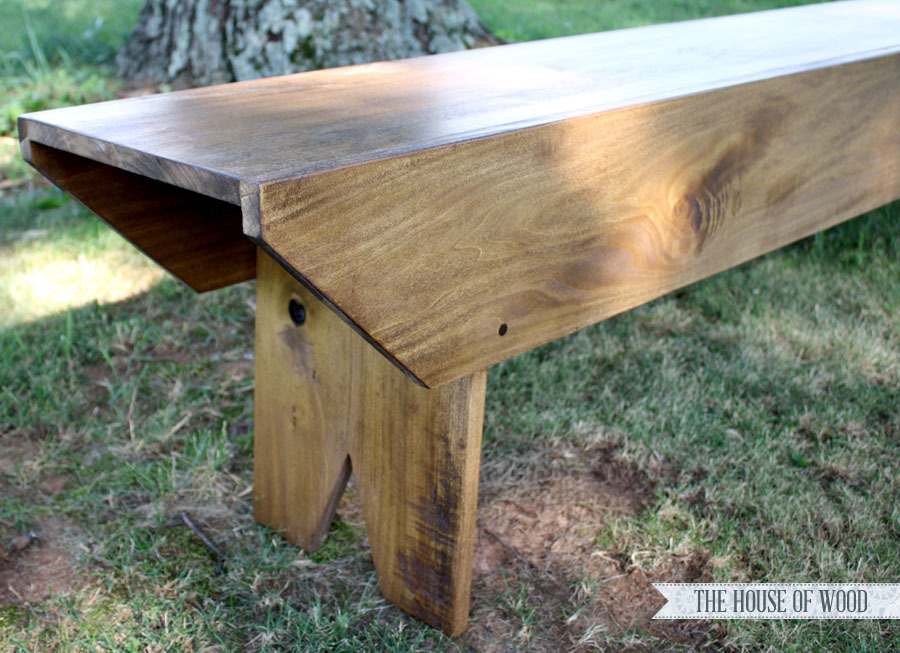

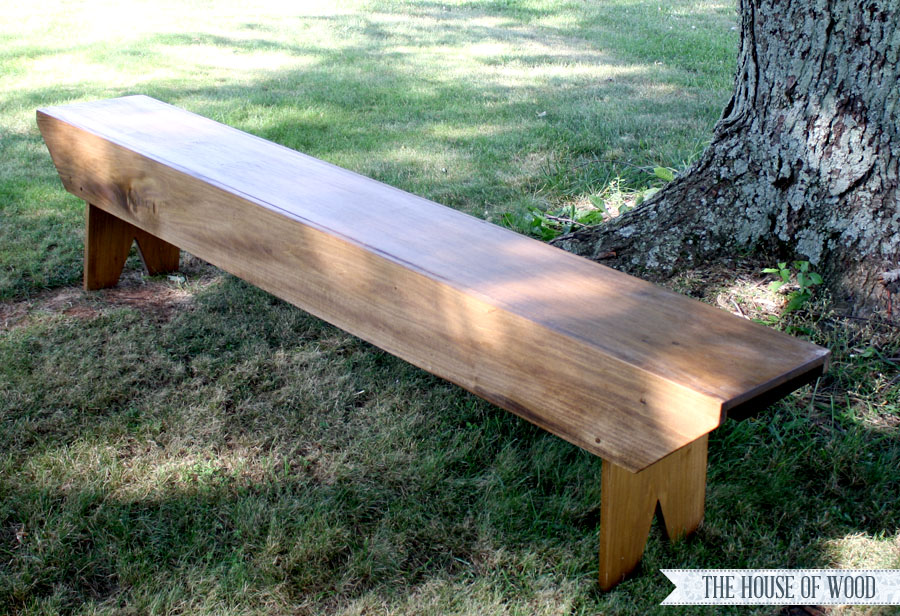
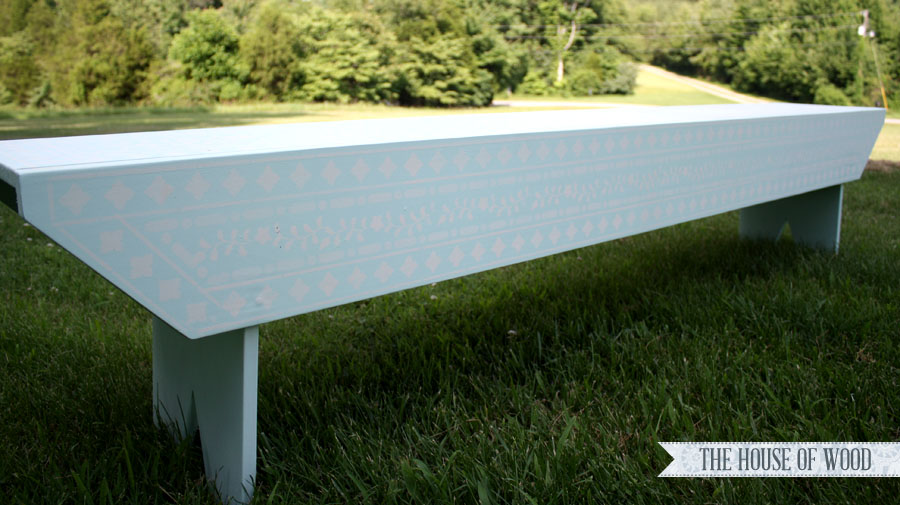









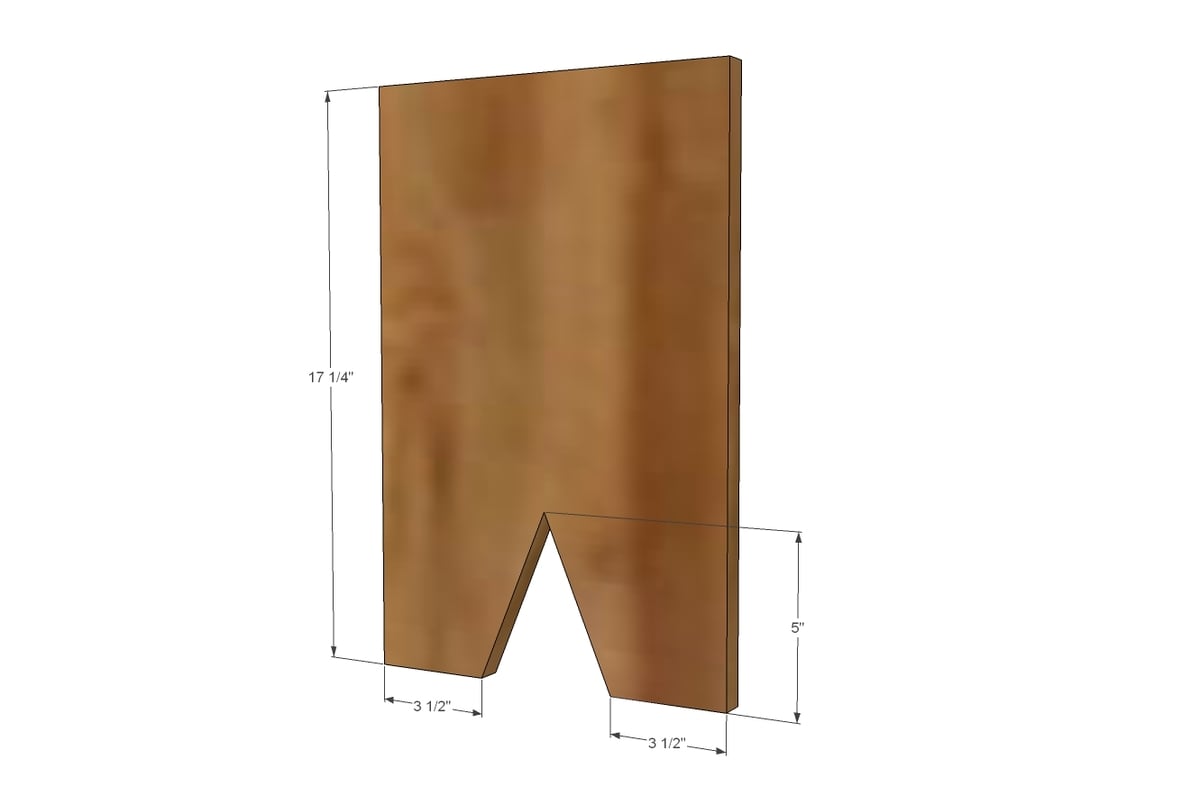
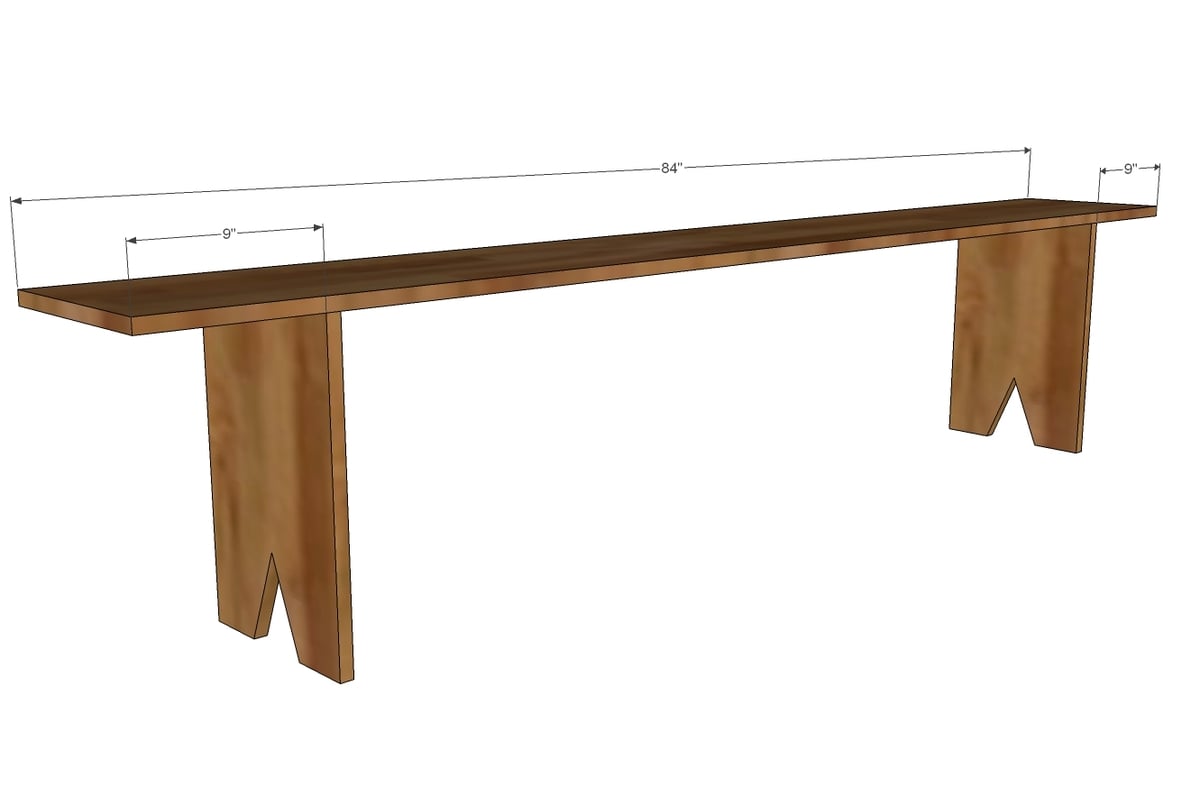

Comments
Jake
Tue, 07/08/2014 - 05:31
Add Dowels
I love the bench. To add strength and a small break in the long top is to install two two-inch dowels from the top into each legs. Add the dowels after the legs have been securely installed with the PH screws and glue. The aprons should provide sufficient support for side-to-side forces but the dowels look good and do help a bit.
Ramon
Thu, 04/14/2016 - 12:57
bench legs angle and apron placement
Thank you for a beautiful bench project. I notice that in the photo the legs do not look like they are attach straight they almost look like they are in an angle. Also in the instructions there was no mention of not placing the apron even with the legs at the top, since the seat would have to fit in between both aprons, otherwise the seat board would be 1 1/2 short.
The other question I have is the size, 84" seem like a long bench, any reason why this long?
Thanks again for the good job you are doing.